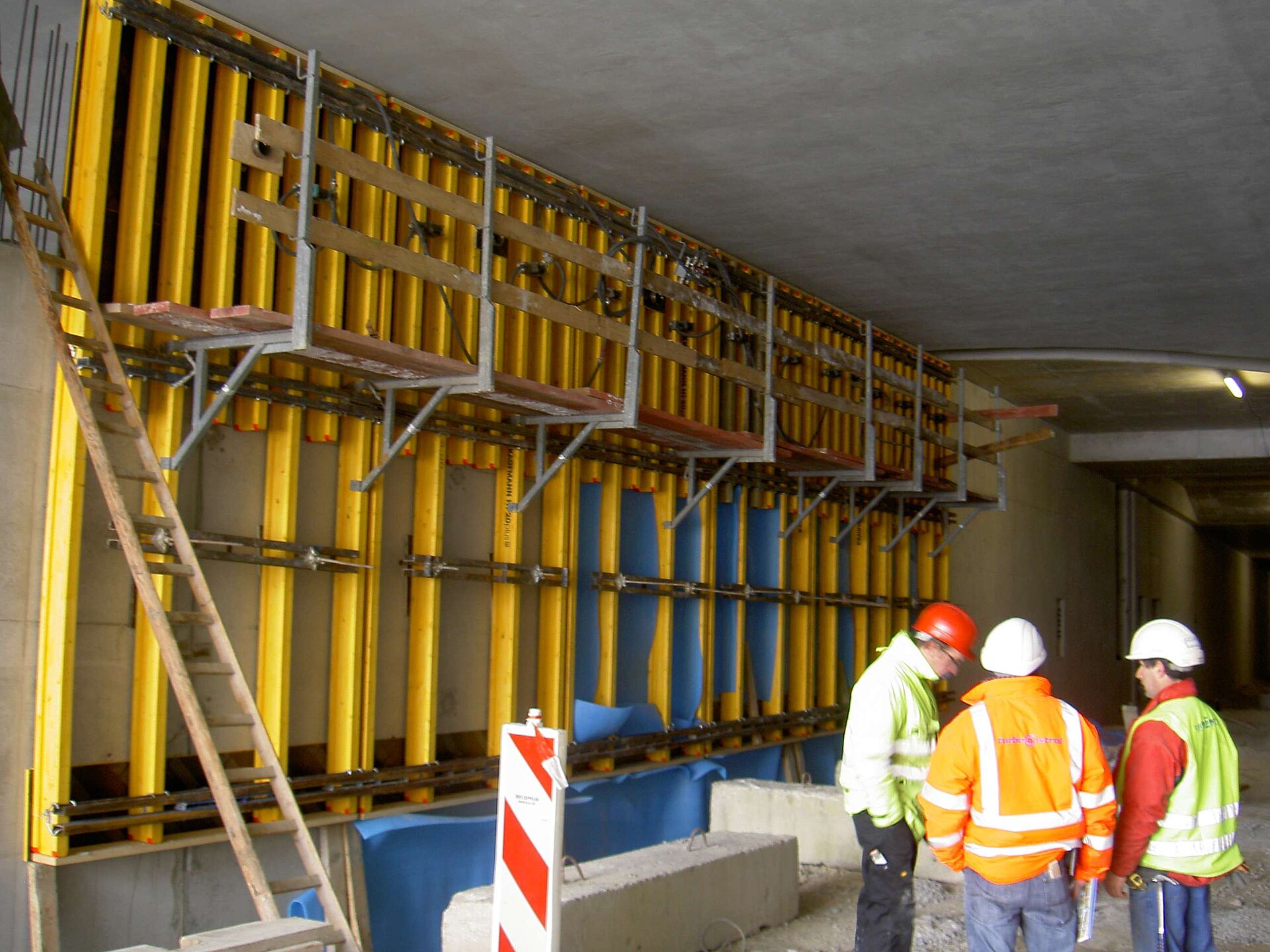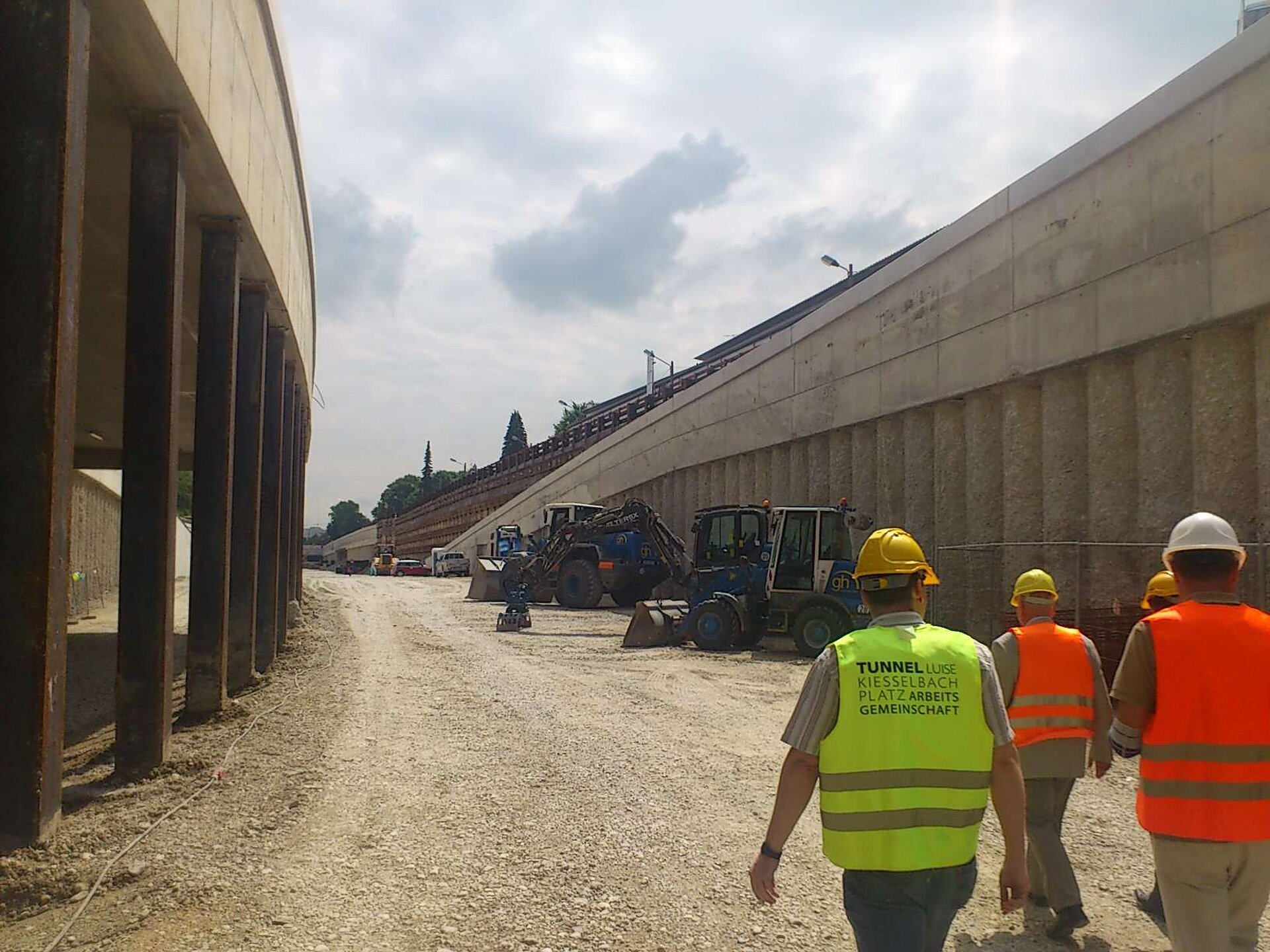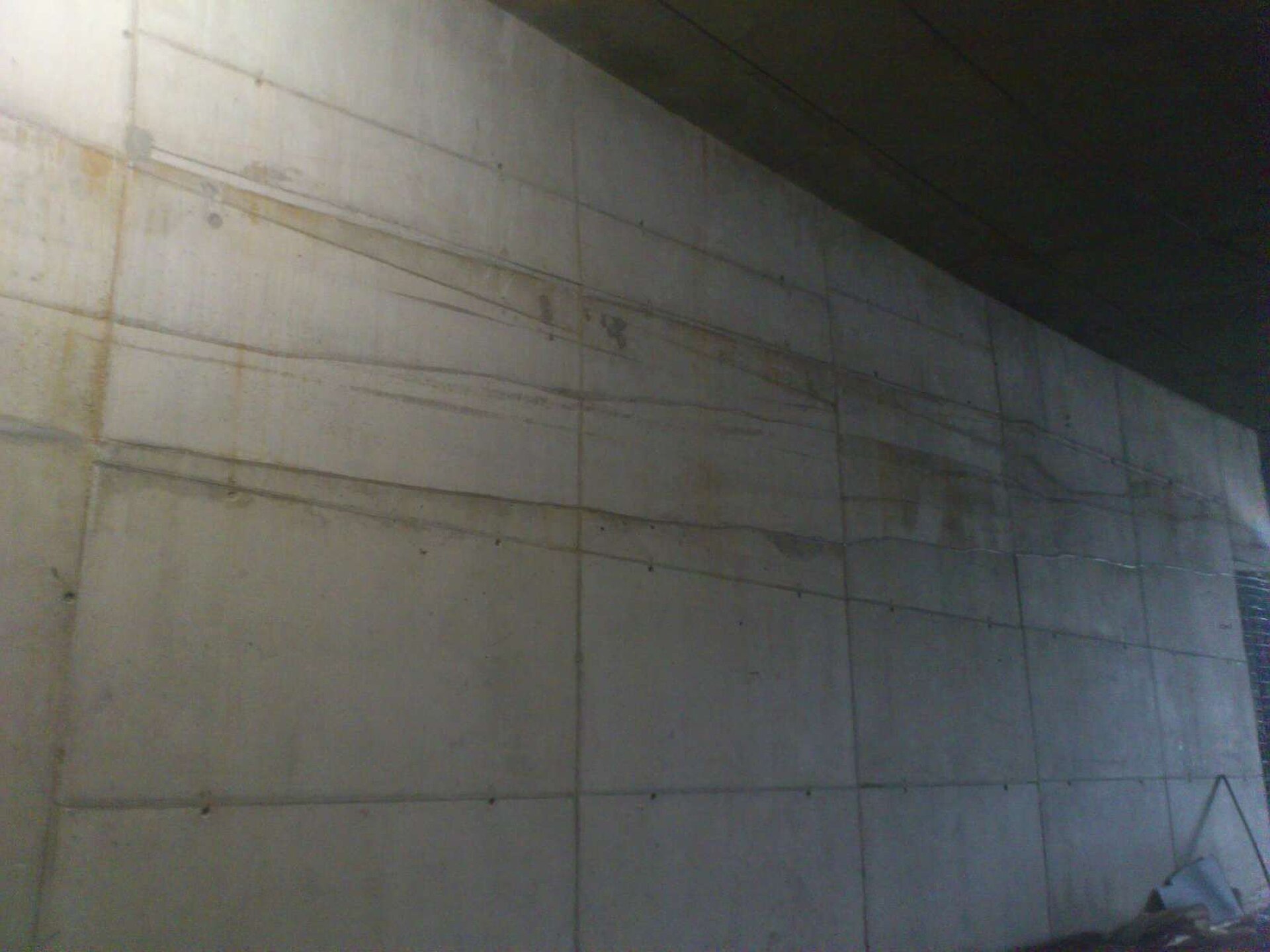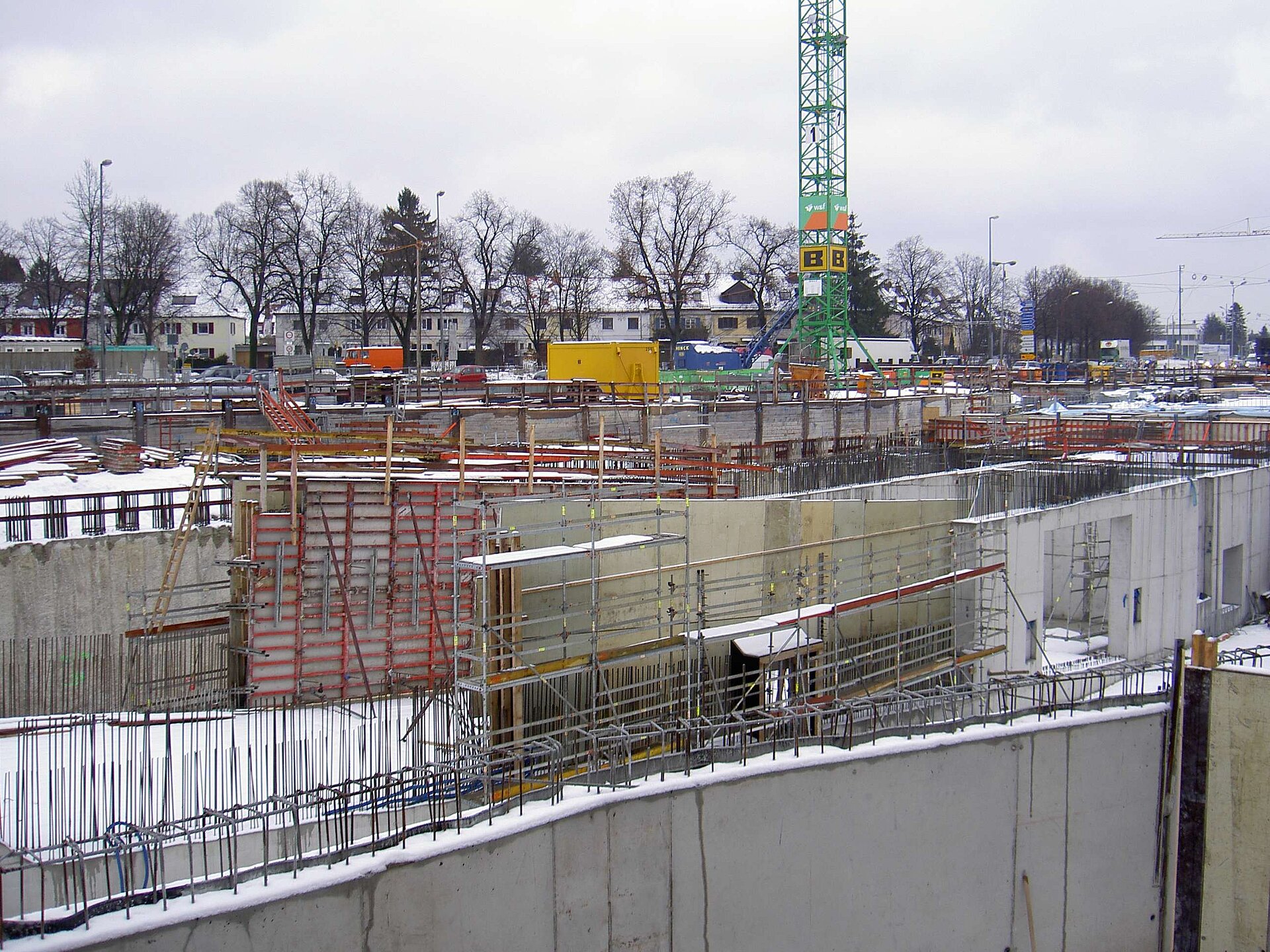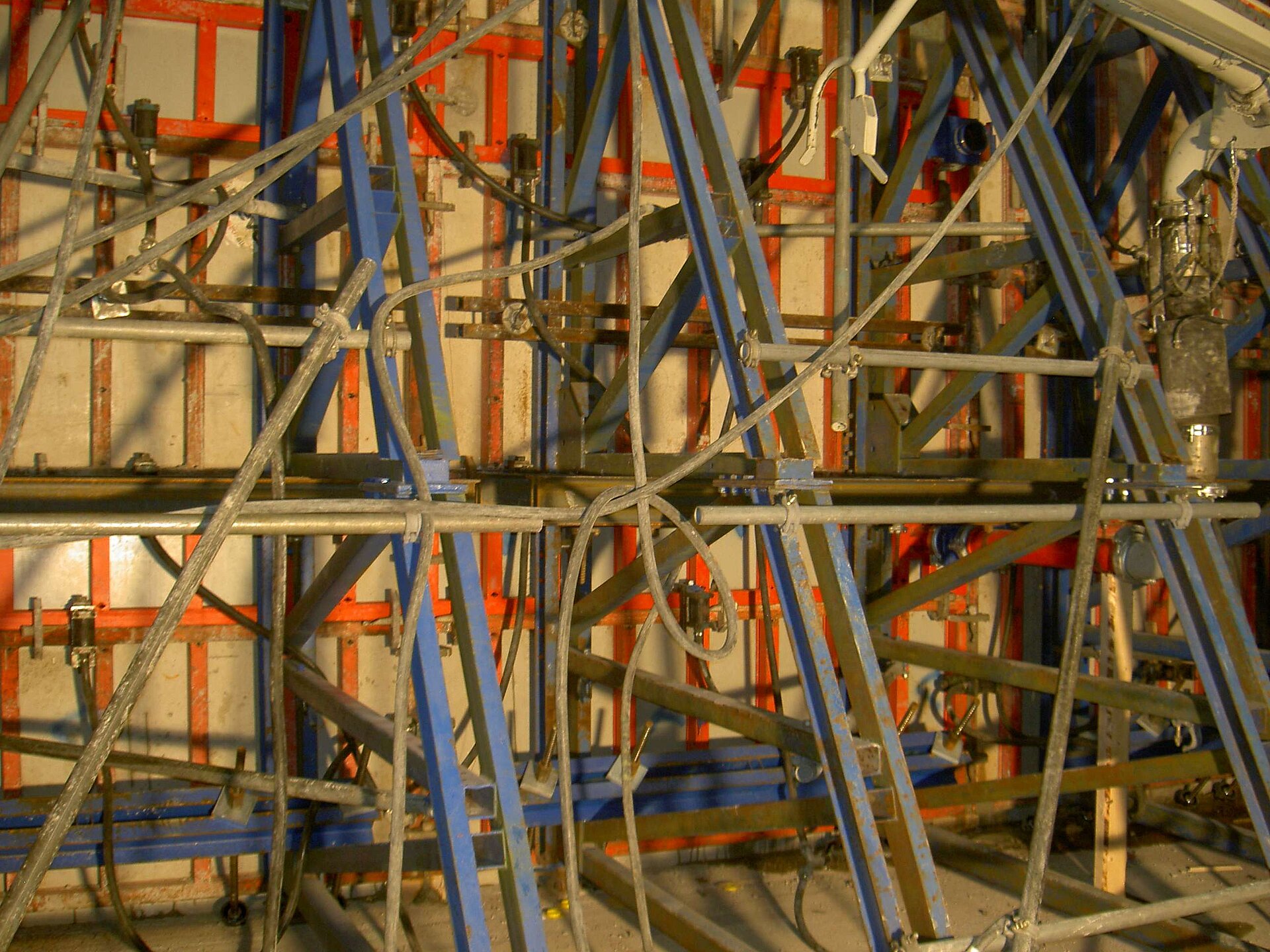Construction Method: cut and cover method, tunnel center walls, basement floor and walls
Description: Arge Ingenieurbau Tunnel Luise Kiesselbach Platz, Munich
Year: 2013 – 2015
Description:
The tunnel in cover construction runs over a length of 1.53km from the north portal at the end of the A96 along Garmischer Strasse in a southerly direction to Luise-Kiesselbachplatz at the end of the Garmischer Autobahn. Between Luise Kiesselbachplatz and Högelwörtherstrasse, the carriageways were relocated for a short section of 400m into a deep open trough with appropriate noise protection measures and then routed east through a 620m long tunnel at Heckenstallerstrasse to Passauer-Strasse. Since the wall heights of the center walls differ in each case, the walls were poured in two sections. The lower four meters of the center wall was constructed with wall formwork on both sides. The concrete was compacted conventionally from above using internal vibrators. In the second step, the wall section below the slab was constructed and poured. The use of internal vibrators was no longer possible, so that only external vibrators could be used. The Consortium decided to use Vr56K pneumatic Mooser formwork vibrators. These vibrators reach their nominal speed immediately and quickly pass through the natural frequency range of the formwork. The high vibrating power lead to very good concrete surfaces and excellent compaction results. The external vibrators were mounted on the universal STA mounting clamp with formwork-specific adaptors for the H20 formwork girders. In the side tunnel sections, some of which run under the main tunnel in the direction of the A95, the pneumatic formwork vibrators were used on single-sided walls with a wall thickness of up to 90cm. In this case, the vibrators were mounted onto a Meva Mammut formwork. For the change to another formwork only the formwork specific adaptor of the STA clamp had to be exchanged.

